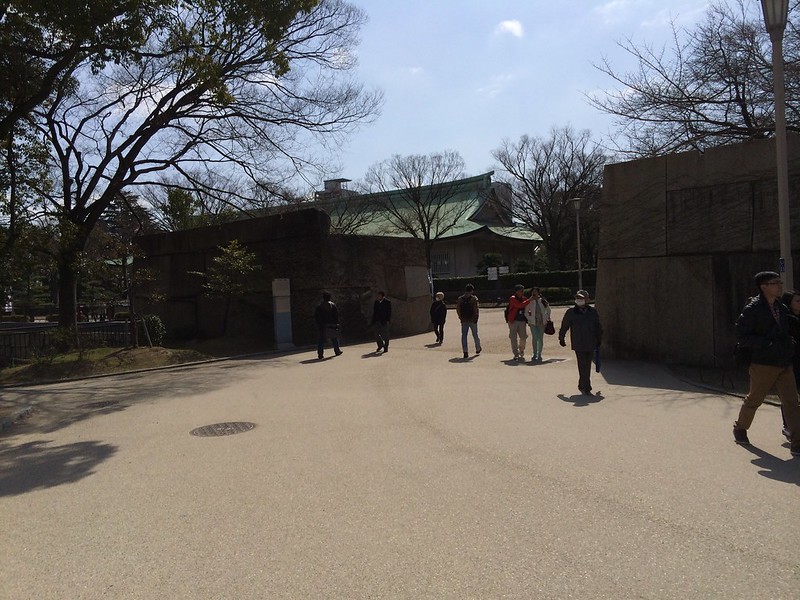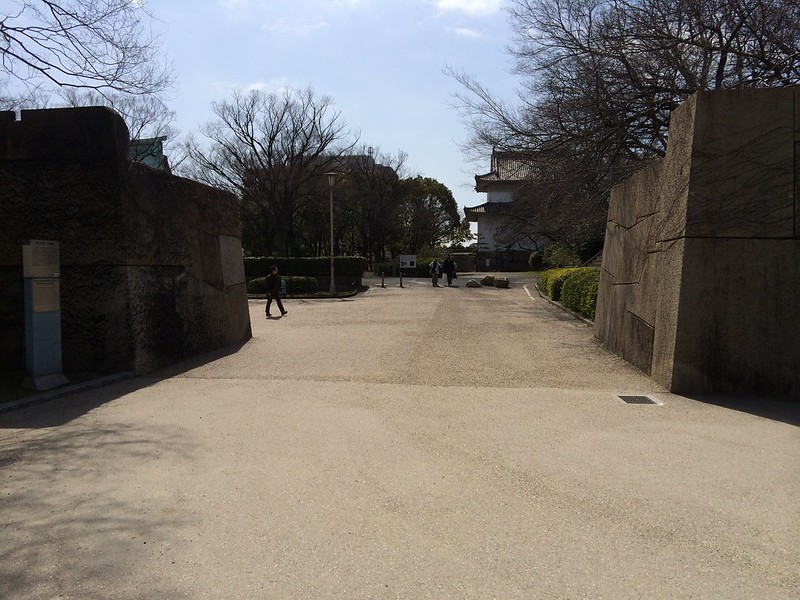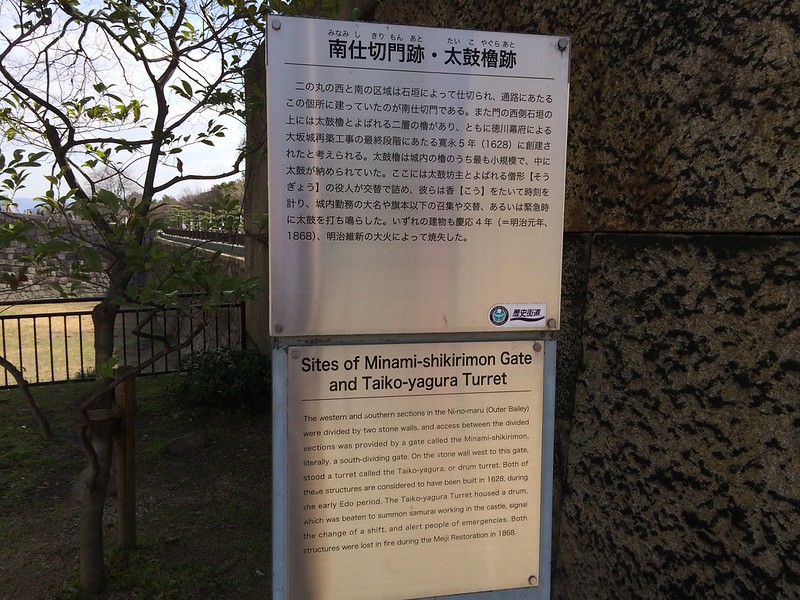大坂城の二の丸は、大手門から入ってすぐにある西側と、桜門がある南側とが、南仕切門によって区切られていました。
かつてここには門とともに太鼓櫓もありましたが、いずれも明治維新(戊辰戦争)の際に焼失してしまいました。



南仕切門跡(みなみしきりもんあと)・太鼓櫓跡(たいこやぐらあと)
二の丸の西と南の区域は石垣によって仕切られ、通路にあたるこの個所に建っていたのが南仕切門である。また門の西側石垣の上には太鼓櫓とよばれる二層の櫓があり、ともに徳川幕府による大坂城再築工事の最終段階にあたる寛永5年(1628)に創建されたと考えられる。太鼓櫓は城内の櫓のうち最も小規模で、中に太鼓が納められていた。ここには太鼓坊主とよばれる僧形【そうぎょう】の役人が交替で詰め、彼らは香【こう】をたいて時刻を計り、城内勤務の大名や旗本以下の招集や交替、あるいは緊急時に太鼓を打ち鳴らした。いずれの建物も慶応4年(=明治元年、1868)、明治維新の大火によって焼失した。Sites of Minami-shikirimon Gate and Taiko-yagura Turret
The western and southern sections in the Ni-no-maru (Outer Bailey) were divided by two stone walls, and access between the divided sections was provided by a gate called the Minami-shikirimon, literally, a south-dividing gate. On the stone wall west to this gate, stood a turret called the Taiko-yagura, or drum turret. Both of these structures are considered to have been built in 1628, during the early Edo period. The Taiko-yagura Turret housed a drum, which was beaten to summon samurai working in the castle, signal the change of a shift, and alert people of emergencies. Both structures were lost in fire during the Meiji Restoration in 1868.
なお、ここからまっすぐ先にあるのが重要文化財の六番櫓で、門に正対して背中側にあるのが西の丸庭園です。

